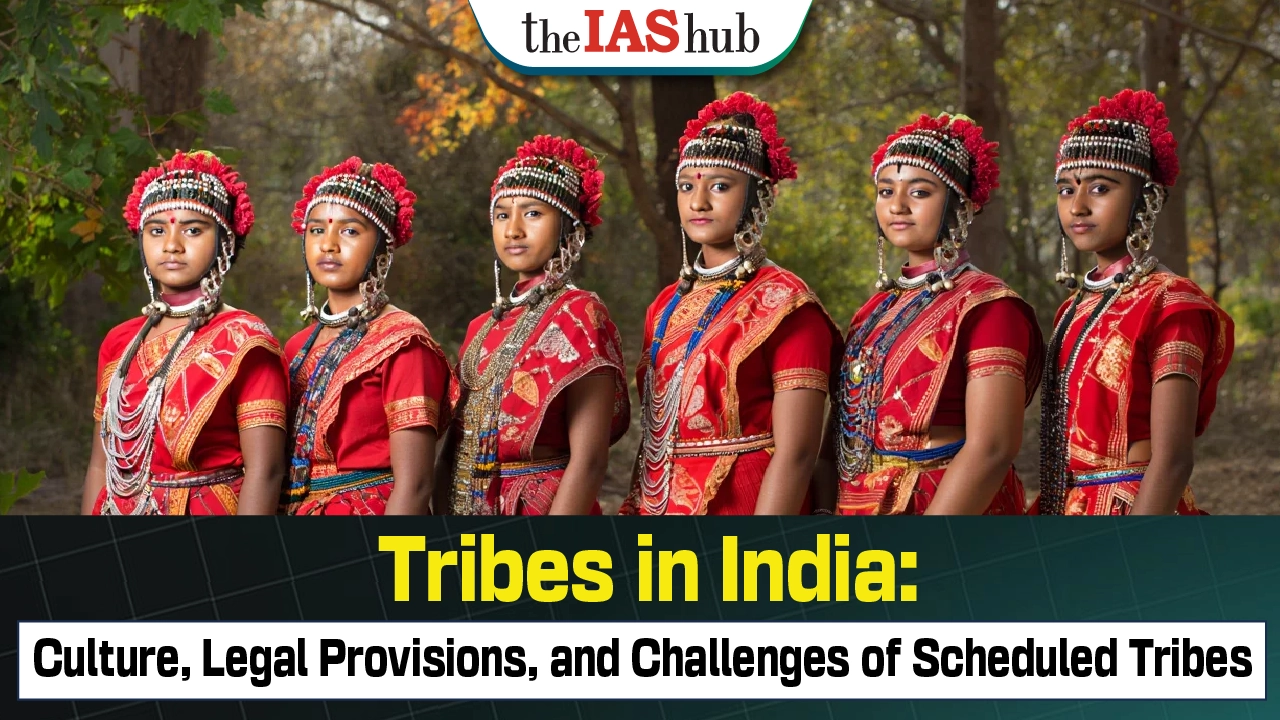Explore the tribes of India, their unique culture, constitutional recognition as Scheduled Tribes, key legal protections, tribal statistics, social changes, and ongoing issues like land rights and development conflicts.


A tribe usually consists of members of society having common culture, dialect, customs etc. The tribes are often confined to a definite area and may also consist of different sub groups.
The tribal communities in India have been recognized by the Indian Constitution under ‘Schedule 5’ of the constitution. Hence the tribes recognized by the Constitution are known as ‘Scheduled Tribes’

Tribal Statistics in India
|
|
Polavaram Dam Conflict:
Forest Rights Act (FRA) Violation:
|
Indian society exhibits resilience, unity in diversity, and a spirit of inclusivity. It has made significant strides in various fields, such as education, technology, arts, and sports, and has produced accomplished individuals who have made their mark globally. It is important for Indian society to continue fostering an environment of tolerance, acceptance, and respect for diversity. By promoting education, awareness, and social reforms, Indian society can strive towards creating a more equitable, harmonious, and progressive nation.
Overall, Indian society is a dynamic entity that is constantly evolving and adapting to meet the challenges of the present while preserving its cultural roots. With concerted efforts and collective participation, Indian society has the potential to overcome its challenges and create a brighter future for all its citizens.


Refine your answer writing skills and elevate your UPSC preparation with personalized support and expert feedback.
Fill out the form to get started with the program or any other enquiries !








Are you dreaming of becoming an IAS officer? Then, IAShub can be your best guide. It is one of the Best IAS Coaching in Delhi. Many students who want to clear the UPSC exam join IAShub for learning. The institute gives both online and offline classes. Their teachers are experienced and helpful. They easily explain every topic. Students also get notes, tests, and tips to do well in the exam.
IAShub is in Delhi and is trusted by many UPSC students. It offers coaching for every part of the UPSC exam – Prelims, Mains, and Interview. The classes are simple and easy to understand. The teachers are experts and guide students in the right way. IAShub is also known for its helpful notes, test series, and answer-writing practice. IAShub is the best coaching in Delhi and also gives UPSC Online Classes. This helps students from any place in India to learn. The online classes are live and also recorded. So, students can watch them anytime. These classes cover the full UPSC syllabus.
Here are some important services provided by IAShub:
The UPSC Civil Services Exam has three parts:
This exam is tough, but with the right guidance, it becomes easy to manage. Students must study smart and stay regular.
IAShub supports students from the beginning to the end. It gives the right books, tests, and notes. The classes are easy to follow, and the teachers are always ready to help. Students get personal doubt sessions too. The test series and answer checking help students learn where they need to do better. Also, free study materials save time and money.
IAShub also guides students during the final stage – the interview. Experts take mock interviews and give useful tips. This full support makes IAShub one of the best IAS coaching in Delhi.